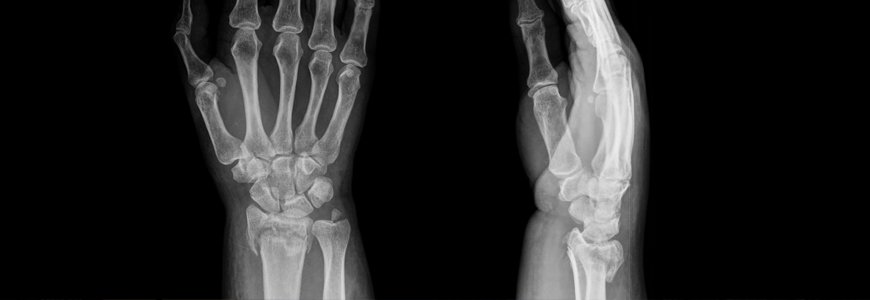A new ultrasound clinic within the Duke Rheumatology and Immunology Division expands and accelerates diagnostic and procedural options and, in many cases, enables diagnosis and treatment in a single visit.
Rheumatologists with specialized training in ultrasound imaging benefit from real-time imaging of joints, soft tissue, nerves, and blood flow. “Ultrasound gives us an accurate and affordable point-of-care diagnostic study that can be done in the clinic setting,” says Ryan C. Jessee, MD, one of two Duke rheumatologists with advanced ultrasound training and certification. Sophia C. Weinmann, MD, also sees patients in the clinic, which opened in 2018.
Presenting no radiation risk, the technology is particularly useful as a diagnostic tool for patients with auto-immune inflammatory conditions such as psoriatic arthritis, spondyloarthritis, or rheumatoid arthritis. Ultrasound also has been shown to be helpful with diagnosis of crystalline arthritis, such as gout, as well as identifying such musculoskeletal disorders as rotator cuff tendonitis.
“Ultrasound allows us to look into the joints themselves and measure the amount of inflammation that exists as well as assess the previous damage,” Jessee says. “This can be helpful in making a long-term prognosis in inflammatory arthritis.”
In addition to diagnostic opportunities, use of ultrasound during procedures results in improved accuracy and superior outcomes, Jessee says. Rheumatologists can use the probe to provide images that help them avoid blood vessels or nerves when injecting steroids or other therapeutic treatments.
“The probe helps us remain aware of the needle’s location during the procedure,” Jessee says. “We can reduce the side effects of the injections as well as ensure correct needle location in order to inject medication into the area in which it will have the most effect.” The imaging is particularly useful for such complex procedures as sacroiliac joint injections or for injections in small joints such as the fingers.
The one-day per week clinic has reduced wait times for patients and provided more efficient care by expediting diagnostic and procedural options.
“This gives us the ability to assess a patient’s condition, explain options and take the required action immediately if the patient wants to move forward,” Jessee says.
